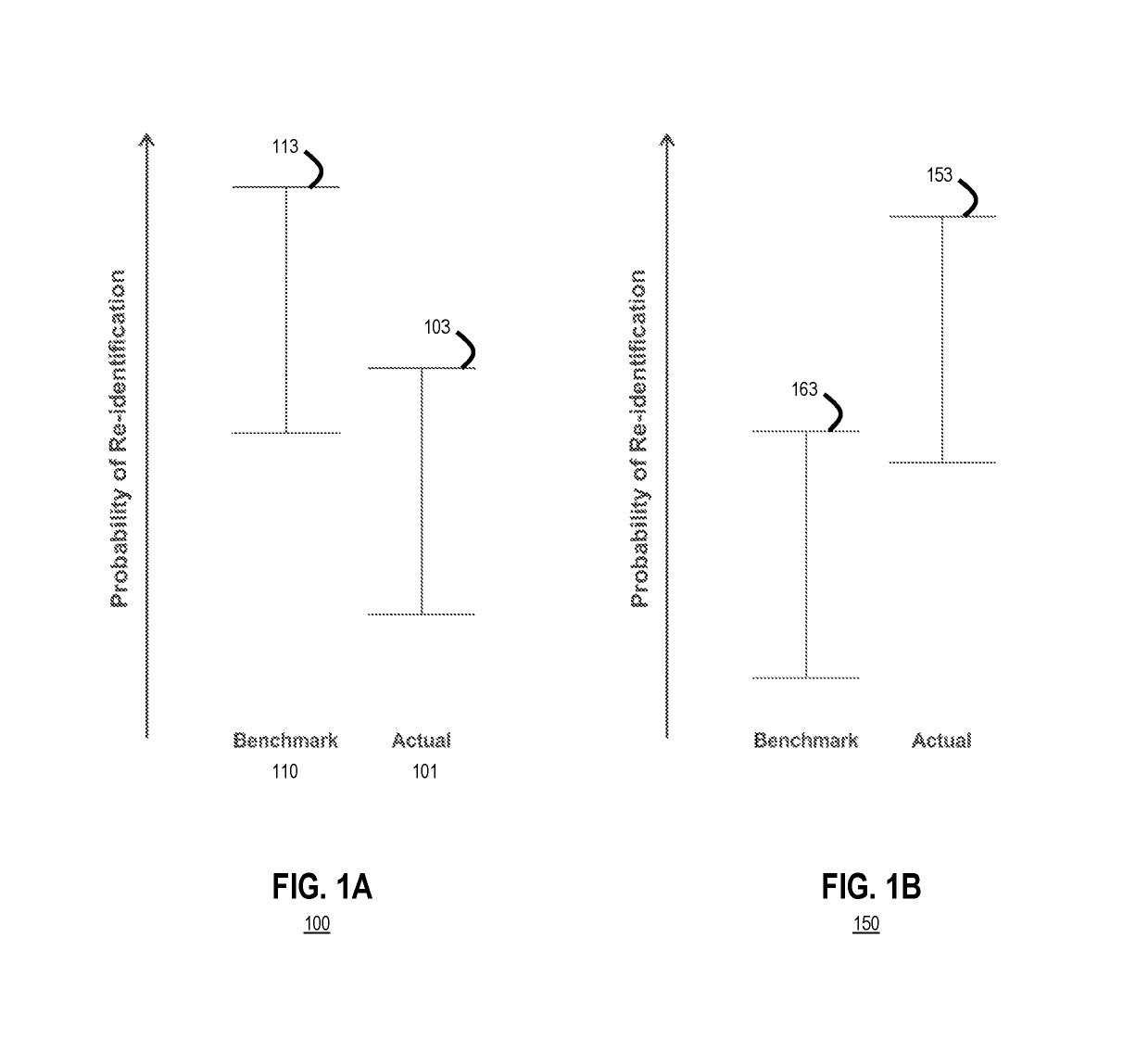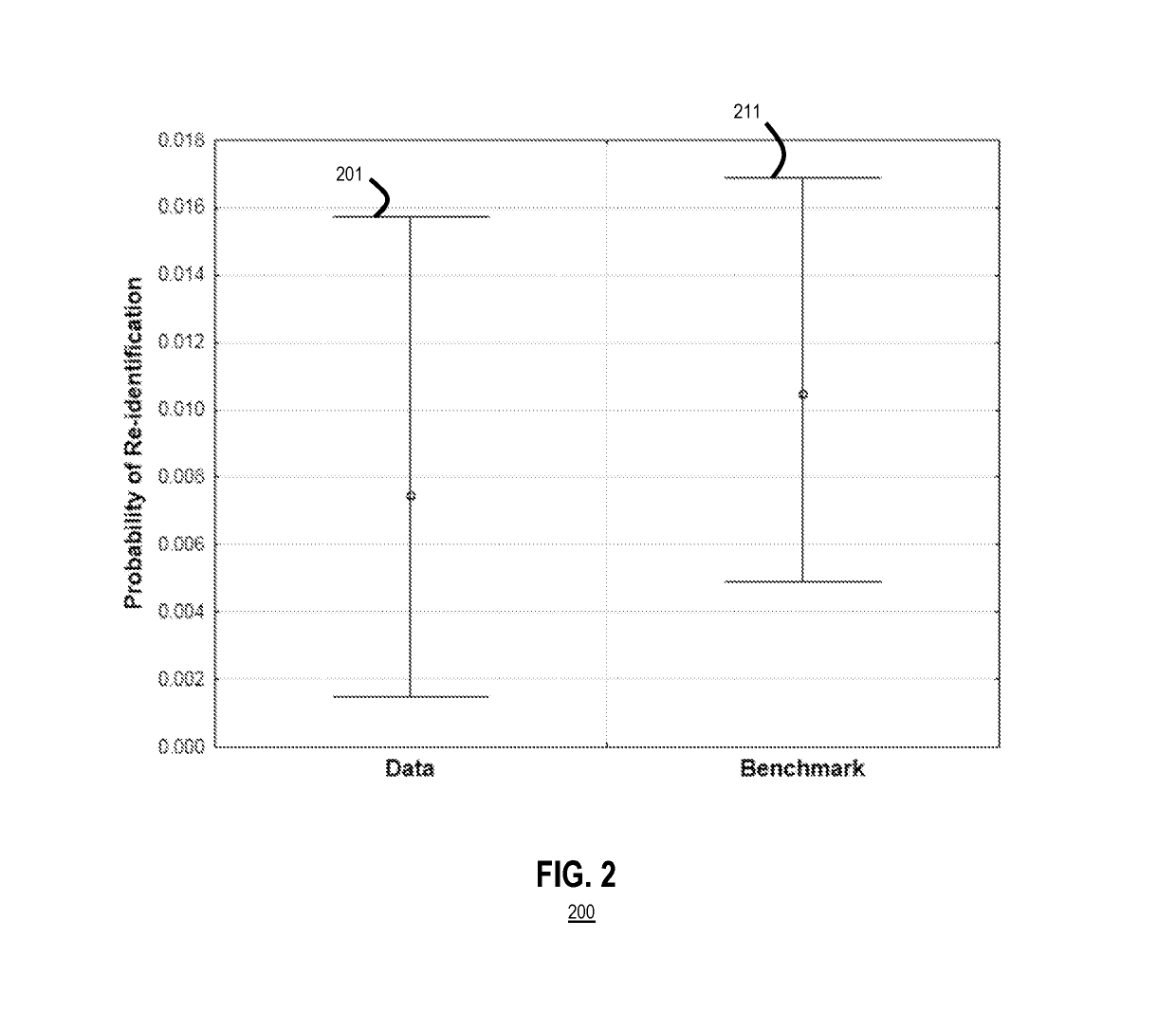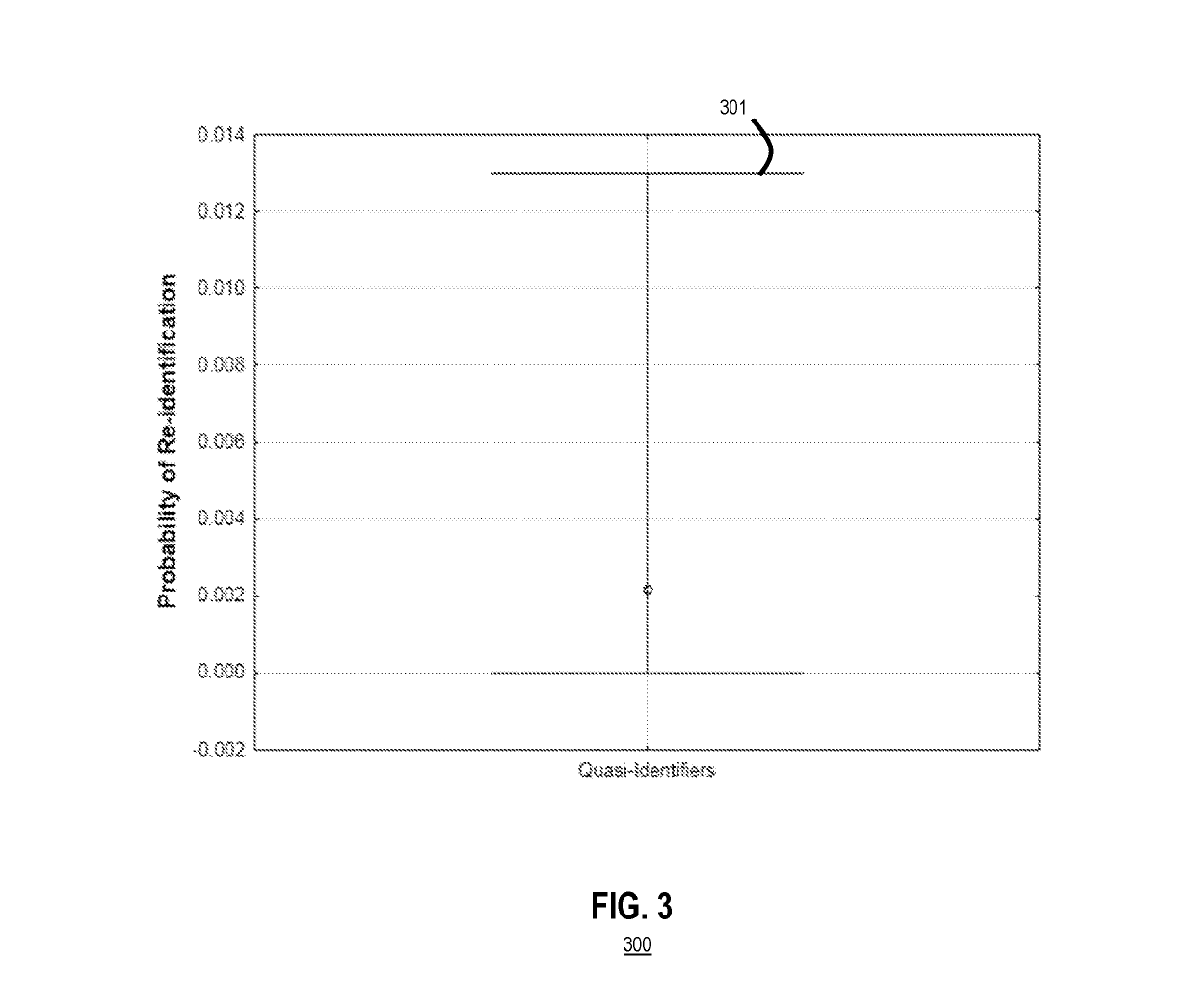System and method to reduce a risk of re-identification of text de-identification tools
a text de-identification tool and risk assessment technology, applied in the field of risk assessment of data sets, can solve the problem that the risk of a patient being re-identified in the wrong way is not accurately expressed in the metrics used to determine whether the system is performing well, and achieve the goal of facilitating precise determination, improving the de-identification of patient data, and reducing the risk of re-identification
- Summary
- Abstract
- Description
- Claims
- Application Information
AI Technical Summary
Benefits of technology
Problems solved by technology
Method used
Image
Examples
Embodiment Construction
[0019]The disclosure will be illustrated below in conjunction with an exemplary computing and storage system. Although well suited for use with, e.g., a system using a server(s), data sources and / or database(s), the disclosure is not limited to use with any particular type of computing, communication and storage system or configuration of system elements. Those skilled in the art will recognize that the disclosed techniques may be used in any computing, communication and storage application in which it is desirable to store protected data.
[0020]As used herein, the term “module” refers generally to a logical sequence or association of steps, processes or components. For example, a software module may comprise a set of associated routines or subroutines within a computer program. Alternatively, a module may comprise a substantially self-contained hardware device. A module may also comprise a logical set of processes irrespective of any software or hardware implementation.
[0021]A modul...
PUM
 Login to View More
Login to View More Abstract
Description
Claims
Application Information
 Login to View More
Login to View More - R&D
- Intellectual Property
- Life Sciences
- Materials
- Tech Scout
- Unparalleled Data Quality
- Higher Quality Content
- 60% Fewer Hallucinations
Browse by: Latest US Patents, China's latest patents, Technical Efficacy Thesaurus, Application Domain, Technology Topic, Popular Technical Reports.
© 2025 PatSnap. All rights reserved.Legal|Privacy policy|Modern Slavery Act Transparency Statement|Sitemap|About US| Contact US: help@patsnap.com



